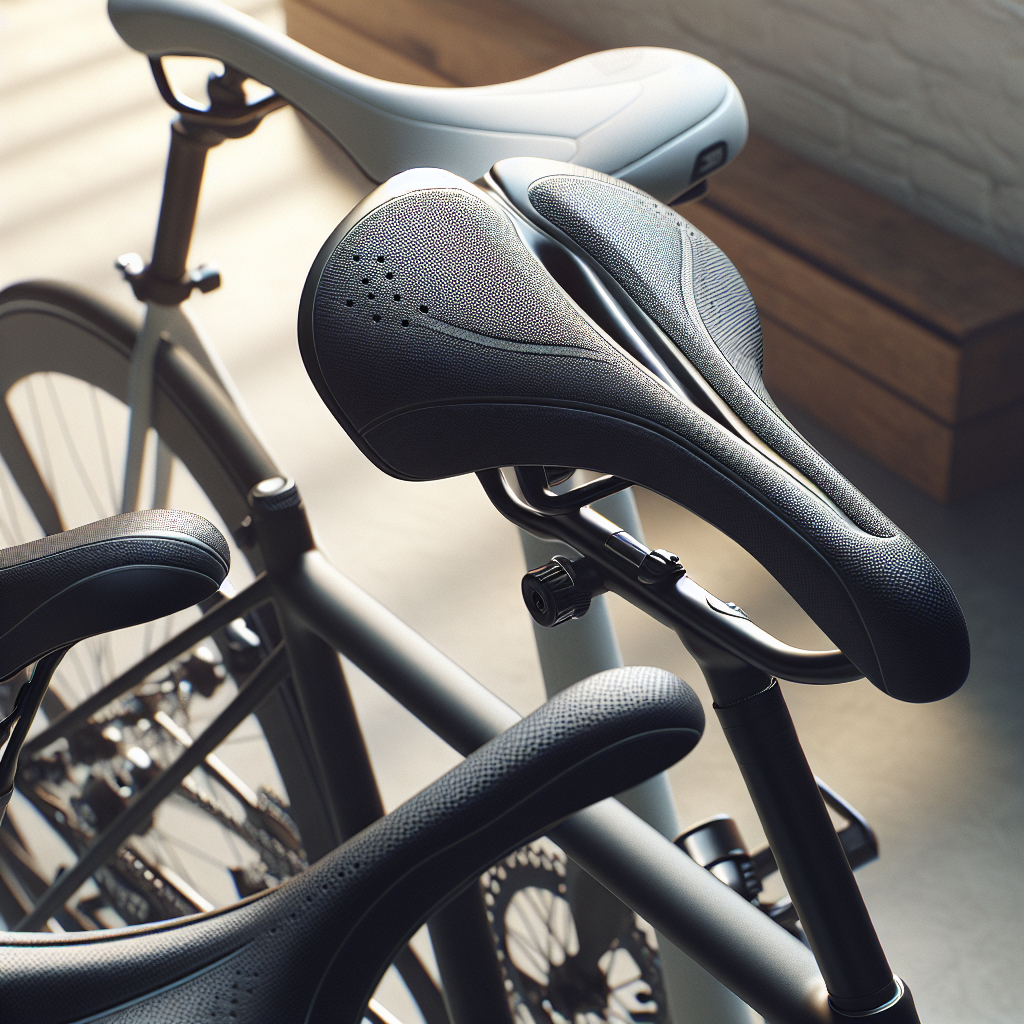
Choosing the right bike saddle is crucial for both comfort and performance. Whether you’re a casual rider or a professional cyclist, the saddle you choose can significantly impact your riding experience. This article will guide you through the essential factors to consider when selecting a bike saddle, ensuring you make an informed decision that enhances your comfort and performance.
Understanding Saddle Anatomy
Before diving into the specifics of choosing a bike saddle, it’s important to understand the basic anatomy of a saddle. A bike saddle consists of several key components, each playing a vital role in providing support and comfort.
Shell
The shell is the main structure of the saddle, typically made from materials like plastic, carbon fiber, or a combination of both. The shell’s shape and flexibility determine the overall feel of the saddle. A more flexible shell can provide better comfort, while a stiffer shell may offer improved power transfer.
Padding
Padding is the layer of material between the shell and the saddle cover. It can be made from foam, gel, or a combination of both. The amount and type of padding can greatly affect comfort. More padding doesn’t always mean more comfort; it’s about finding the right balance for your riding style and body type.
Cover
The cover is the outermost layer of the saddle, made from materials like synthetic leather, real leather, or fabric. The cover’s durability and texture can influence your comfort, especially on longer rides. A high-quality cover can also improve the saddle’s longevity.
Rails
The rails are the metal or carbon fiber bars that attach the saddle to the seat post. They come in various materials, including steel, titanium, and carbon fiber. The material of the rails can affect the saddle’s weight and flexibility, impacting both comfort and performance.
Factors to Consider When Choosing a Saddle
Now that you understand the basic anatomy of a bike saddle, let’s explore the key factors to consider when choosing the right saddle for your needs.
Riding Style
Your riding style is one of the most important factors to consider when selecting a saddle. Different types of riding require different saddle characteristics.
- Road Cycling: For road cycling, a narrower and lighter saddle is often preferred. These saddles are designed to reduce friction and allow for efficient pedaling.
- Mountain Biking: Mountain bike saddles are typically wider and more padded to provide extra comfort and support on rough terrain.
- Commuting: If you use your bike for commuting, a saddle with moderate padding and a durable cover is ideal. Comfort is key for daily rides.
- Touring: Touring saddles are designed for long-distance rides. They often have more padding and a wider shape to provide comfort over extended periods.
Body Anatomy
Everyone’s body is different, and your anatomy plays a significant role in determining the right saddle for you. Here are some anatomical factors to consider:
- Sit Bone Width: Your sit bones are the bony parts of your pelvis that support your weight on the saddle. Measuring your sit bone width can help you choose a saddle that provides adequate support.
- Flexibility: Your flexibility can affect your riding position and the type of saddle that suits you best. More flexible riders may prefer a flatter saddle, while less flexible riders might benefit from a more contoured shape.
- Gender: Men and women often have different anatomical needs when it comes to saddles. Many manufacturers offer gender-specific saddles designed to accommodate these differences.
Padding and Cushioning
The amount and type of padding in a saddle can greatly influence your comfort. However, more padding doesn’t always mean more comfort. It’s about finding the right balance for your riding style and body type.
- Foam Padding: Foam padding is lightweight and provides good support. It’s a popular choice for road cycling and racing.
- Gel Padding: Gel padding offers more cushioning and can be more comfortable for longer rides. It’s often used in touring and commuting saddles.
- Minimal Padding: Some performance-oriented saddles have minimal padding to reduce weight and improve power transfer. These are best suited for experienced riders who prioritize performance over comfort.
Testing and Adjusting Your Saddle
Once you’ve chosen a saddle, it’s important to test it and make any necessary adjustments to ensure optimal comfort and performance.
Test Rides
Before committing to a new saddle, take it for a few test rides. Pay attention to how it feels during different types of rides and terrains. If possible, borrow a similar saddle from a friend or visit a bike shop that offers test saddles.
Saddle Position
The position of your saddle can greatly affect your comfort and performance. Here are some tips for adjusting your saddle position:
- Height: Your saddle should be at a height that allows for a slight bend in your knee when the pedal is at its lowest point. This helps prevent knee strain and improves pedaling efficiency.
- Angle: The saddle should be level or slightly tilted forward. A downward tilt can relieve pressure on sensitive areas, while an upward tilt can provide more support.
- Fore-Aft Position: The saddle should be positioned so that your knee is directly above the pedal axle when the pedal is at the 3 o’clock position. This helps distribute your weight evenly and improves power transfer.
Conclusion
Choosing the right bike saddle is a personal and often complex process. By understanding the anatomy of a saddle, considering your riding style and body anatomy, and testing and adjusting your saddle, you can find the perfect saddle that enhances both your comfort and performance. Remember, the right saddle can make all the difference in your cycling experience, so take the time to find one that suits your needs.

